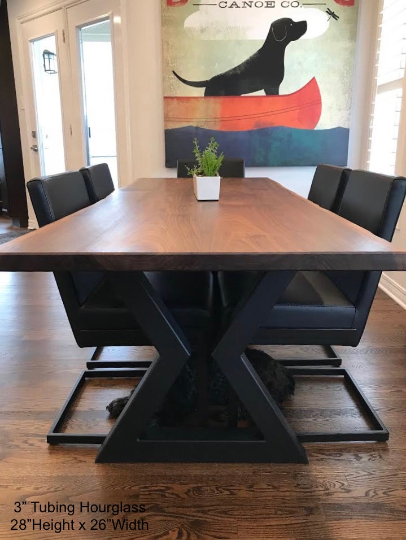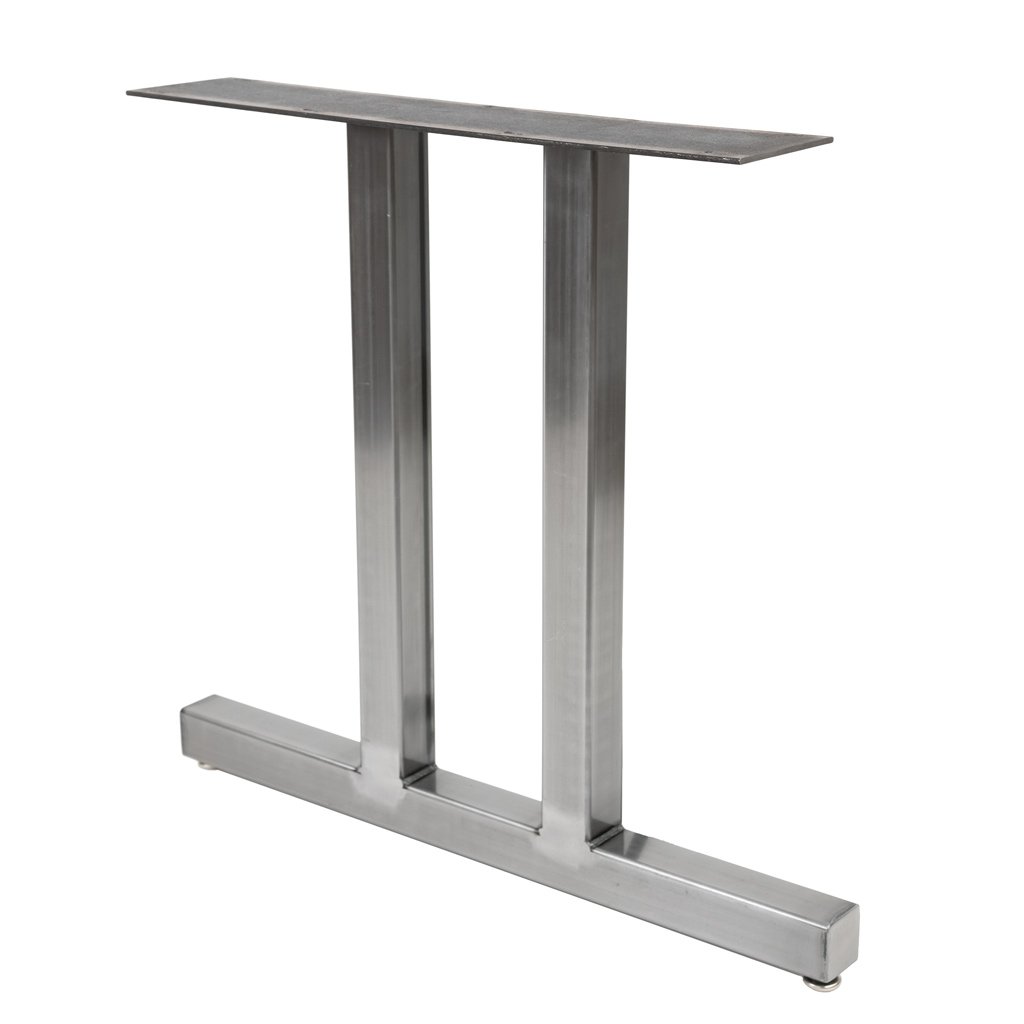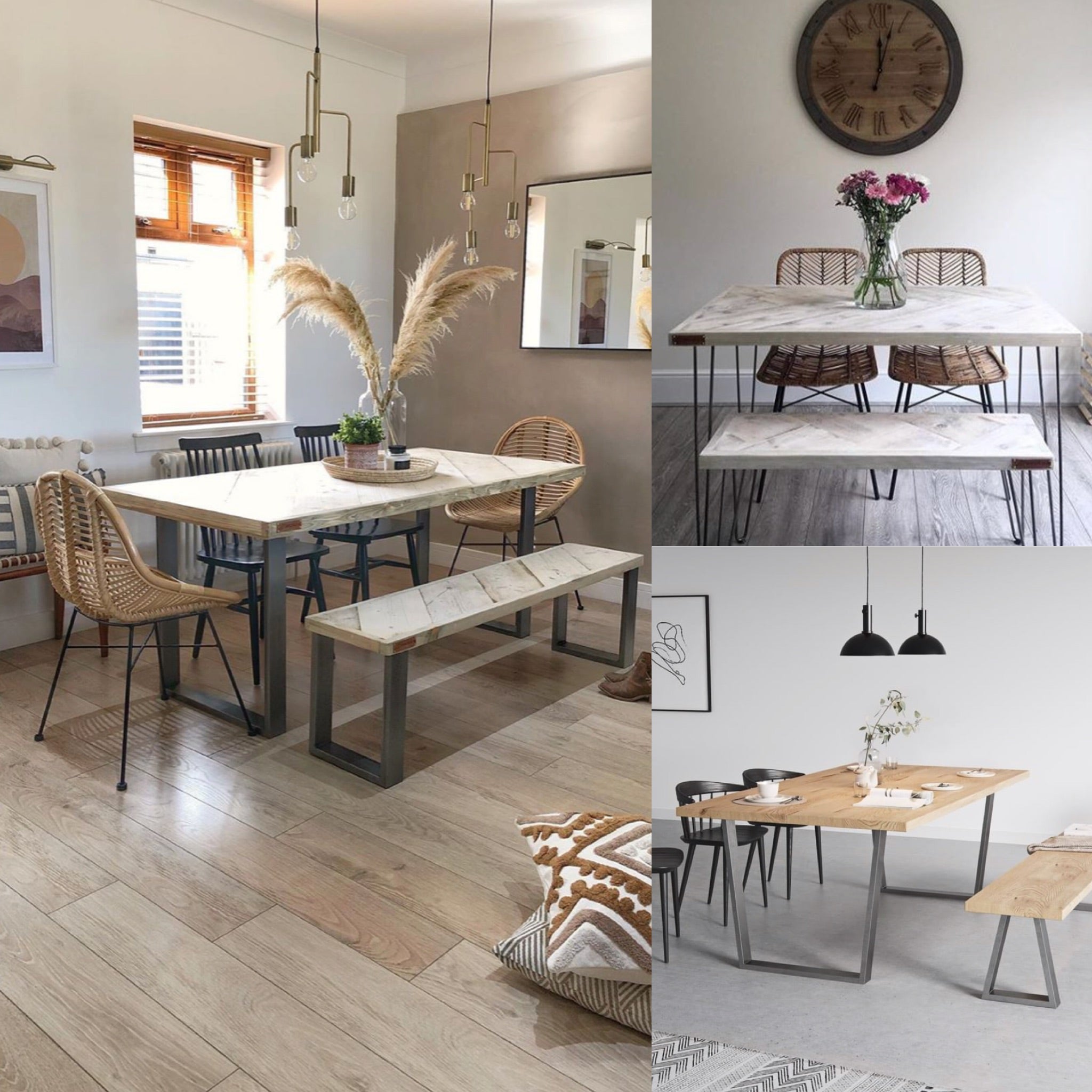Why Custom Dining Room Table Legs Are Worth the Investment
Just How to Choose the Perfect Dining-room Table Legs for Your Home Decor
Picking the perfect eating room table legs is a nuanced procedure that needs mindful consideration of numerous aspects, including your space restrictions, visual preferences, and practical requirements. The interplay in between materials, designs, and dimensions can dramatically affect the setting of your eating location, making it essential to approach this decision carefully.
Assess Your Dining Area
Assessing your eating room is important for choosing the right table legs that enhance both appearances and functionality. Begin by measuring the dimensions of your eating area, including ceiling height, flooring space, and closeness to other furnishings. This details will help figure out the suitable dimension and height of your eating table, which straight influences the choice of table legs.
Next, consider the design and layout of your eating room. As an example, an open-concept design might take advantage of table legs that offer aesthetic lightness, such as slender steel or acrylic choices. On the other hand, a much more traditional setup may call for sturdy wood legs that offer a sense of durability.
Review the existing color scheme and materials in your eating area. Harmonizing the table legs with these components produces a natural appearance that boosts the general decoration.
Ultimately, a comprehensive evaluation of your dining space will certainly lead you in making an informed choice, guaranteeing that your table legs not only improve the visual appeal yet also offer useful functions.
Consider Your Style Preferences
When selecting dining-room table legs, it is important to reflect on your individual design preferences, as they dramatically influence the total visual of your eating room. Your selection of table legs can either enhance or contrast with existing decor, making it important to align them with your favored indoor style motif.
If your home leans in the direction of a modern aesthetic, take into consideration sleek metal or minimal wood legs that give a clean, minimalist look. For a more standard technique, ornate wooden legs with complex carvings can add a touch of style and elegance. Industrial designs gain from robust, raw materials such as reclaimed wood and metal mixes, showing a sturdy appeal.
Furthermore, farmhouse and rustic designs often favor tough, beefy legs that stimulate a feeling of heat and comfort. Conversely, if your decor is eclectic, you might choose unique shapes or a mix of materials to produce visual interest.

Evaluate Material Options
The selection of material for eating space table legs plays a crucial role in both sturdiness and visual allure. Typical materials consist of wood, metal, and composite alternatives, each offering unique characteristics that can affect the total appearance and long life of your table.
Timber is a classic choice, known for its warmth and adaptability. Woods like oak and walnut offer exceptional toughness and can be finished in various spots to match any kind of style. Softwoods like want are more vulnerable to scrapes and dents, making them less perfect for high-traffic areas.
Metal legs, commonly crafted from steel or light weight aluminum, show modernity and industrial charm. They are highly resilient and immune to put on, making them appropriate for family members with youngsters or constant gatherings (dining room table legs). Additionally, steel can be finished in various shades, enhancing the modification possibilities
Composite materials, such as MDF or laminate, offer price and diverse layouts. While usually much less durable than solid timber or steel, they can still supply a trendy look and are frequently very easy to maintain.
Inevitably, the product you select ought to align with your way of life, aesthetic choices, and the level of use your her explanation table will experience.
Determine Elevation and Dimension
Picking the proper height and size for your dining room table is crucial for both capability and official website convenience. The typical height for dining tables commonly ranges from 28 to 30 inches, permitting sufficient legroom for many people when seated. It is important to take into consideration the measurements of your dining area and the kinds of chairs you intend to utilize.

Additionally, think about the proportions of your dining area. A larger table in a roomy location can create a grand setting, while a smaller sized table functions well in more intimate settings. Eventually, the right elevation and dimension will certainly harmonize with your general style and enhance the eating experience for you and your visitors.
Explore Modification Opportunities

Furthermore, the style of the legs can be customized to fit numerous designs, such as rustic, modern-day, or industrial. Conical legs can stimulate a mid-century modern feel, while beefy, block-style legs might resonate with typical or farmhouse decor.
Homeowners can also discover shade finishes, from all-natural timber stains to repaint, enabling them to match or comparison with the table top and surrounding decor.
Additionally, leg elevation can be adapted to accommodate particular seating plans or personal preferences, improving both comfort and functionality.
Last but not least, special embellishments, such as carvings or attractive brackets, can even more individualize the table legs, making the dining experience not just a dish but a declaration piece in the home. By taking into consideration these modification choices, house owners can create a dining-room table that truly shows their originality.
Verdict
Picking the excellent dining room table legs requires cautious consideration of various variables, consisting of the measurements of the eating room, design choices, material sturdiness, and desired height. Personalization options further improve the capacity to attain a natural aesthetic that matches the general decor. By methodically examining these aspects, homeowners can guarantee that the chosen table legs not only meet functional requirements but additionally contribute favorably to the dining experience and ambiance of the home.
Choosing the suitable eating space table legs is a nuanced procedure that calls for mindful factor to consider of different aspects, including your space restraints, aesthetic preferences, and functional needs.Assessing your dining room is crucial for selecting the right table legs that complement both looks and functionality.When identifying dimension, gauge the location where the table will be positioned to ensure it fits conveniently, permitting for at the very least 36 inches of clearance around the table for easy motion. A bigger table in a spacious area can create a grand setting, while a smaller table functions well in more intimate settings.Selecting the suitable dining space table legs requires careful consideration of numerous aspects, consisting of the dimensions of the eating space, design preferences, material resilience, and desired elevation.